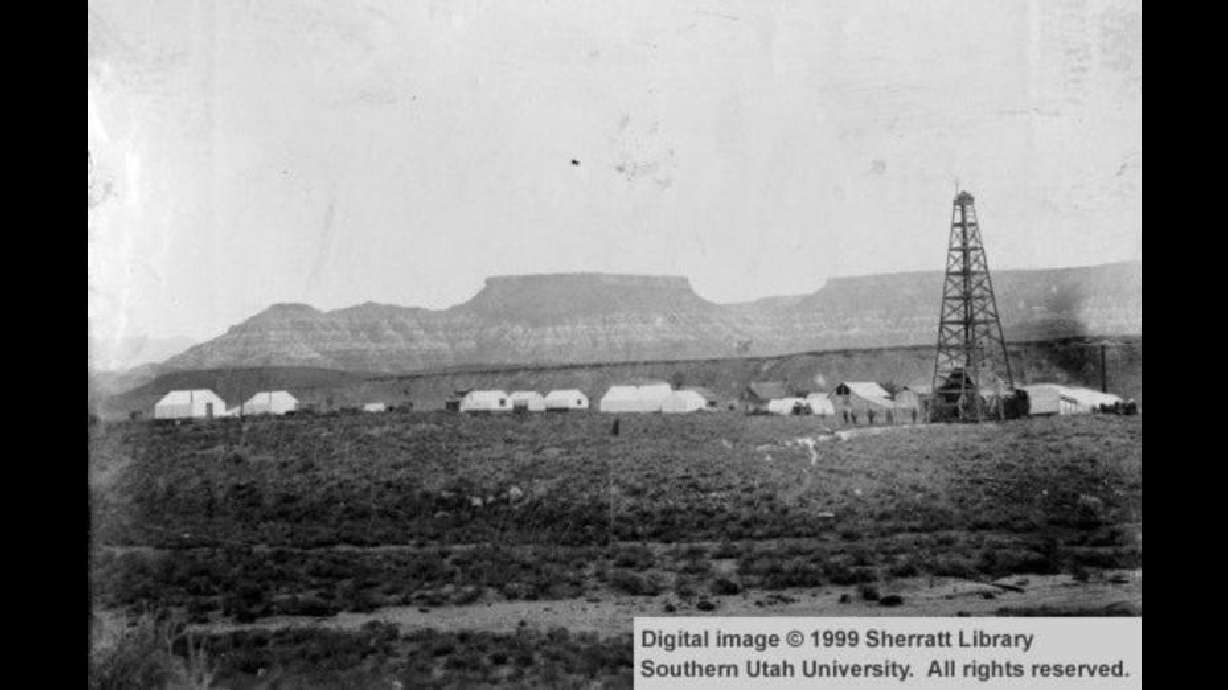Estimated read time: 1-2 minutes
This archived news story is available only for your personal, non-commercial use. Information in the story may be outdated or superseded by additional information. Reading or replaying the story in its archived form does not constitute a republication of the story.
ST. GEORGE — There is hardly anything noticeable upon the Washington County, Utah landscape to remind anyone of attempts at oil drilling during the early part of the 20th century. It was a time when these early oil entrepreneurs and local residents themselves hoped to see a jolt to the local economy from "black gold."
That optimism proved unfounded, especially when tragedy struck one of the oil drilling operations in 1935.
Early Oil Drilling
In 1907, oil was discovered approximately 2 miles northeast of Virgin. Soon after the discovery an active time of oil exploration began with about 15 wells drilled, most of them around Virgin. Most wells were failures, producing only small amounts of oil and gas. It was said that one of those wells produced up to 36 barrels a day, but most agree those claims were exaggerated. There wasn't much of a market for oil at the time except as fuel for further drilling. Financial panic at the time reduced the capital necessary for more exploration, so it ceased, the Washington County Historical Society website notes.
Nothing happened with the wells again until 1918, when the Virgin Dome Oil Company incorporated and started operating three wells that were producing. The company began pumping and established a small local refinery. By September 1920, one of the wells reached a depth of 2,200 feet and total production from the four producing wells (the other three of which were only 550 to 600 feet deep) was only about 20 barrels a day. The bulk of this production was from one well with the other three pumping more water than oil, the WCHS website explains.









